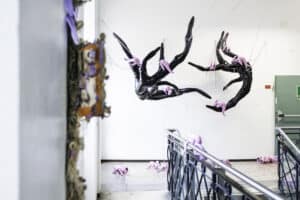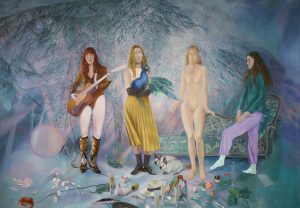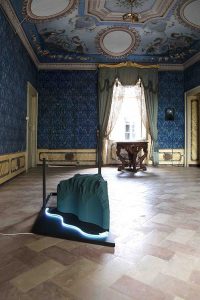Today I interviewed Silvia Mariotti to talk about Not At First Glance, her recent exhibition at the International Center of Graphic Arts in Ljubljana. The solo show was curated by Aurora Fonda (A plus A Gallery), and supported by the Municipality of Ljubljana.
The exhibition is made up of impressive settings inspired by nature and the worlds linked to it. Reality and fiction are intertwined so as to give space to the reinterpretation of the places in our imagination. Thus the real landscapes and the landscapes beyond either seek linkages between past and present or simply mislead us into an illusion that they exist.

Your work is predominantly based in the natural world. When did your passion for nature start?
Since my early photographic work, nature has always played a dominant role. Even when I portray different subjects I tend to insert them into a natural context. I believe this is a sign of my innate attraction to nature, which originated from the experience of the places I grew up in and played in when I was little. Back then, I used to have an alienating, but at the same time familiar, feeling of being somewhere else. That feeling is what I am still searching for every time I examine a new territory. In turn, this also brings me back to a more welcoming and intimate dimension.
When I need to recreate myself, I go in search of the darkest forest, the most dense and impenetrable swamp: here lies the strength, the quintessence of Nature … the vast, wild, terrible mother of all of us, Nature. – H. D. Thoreau
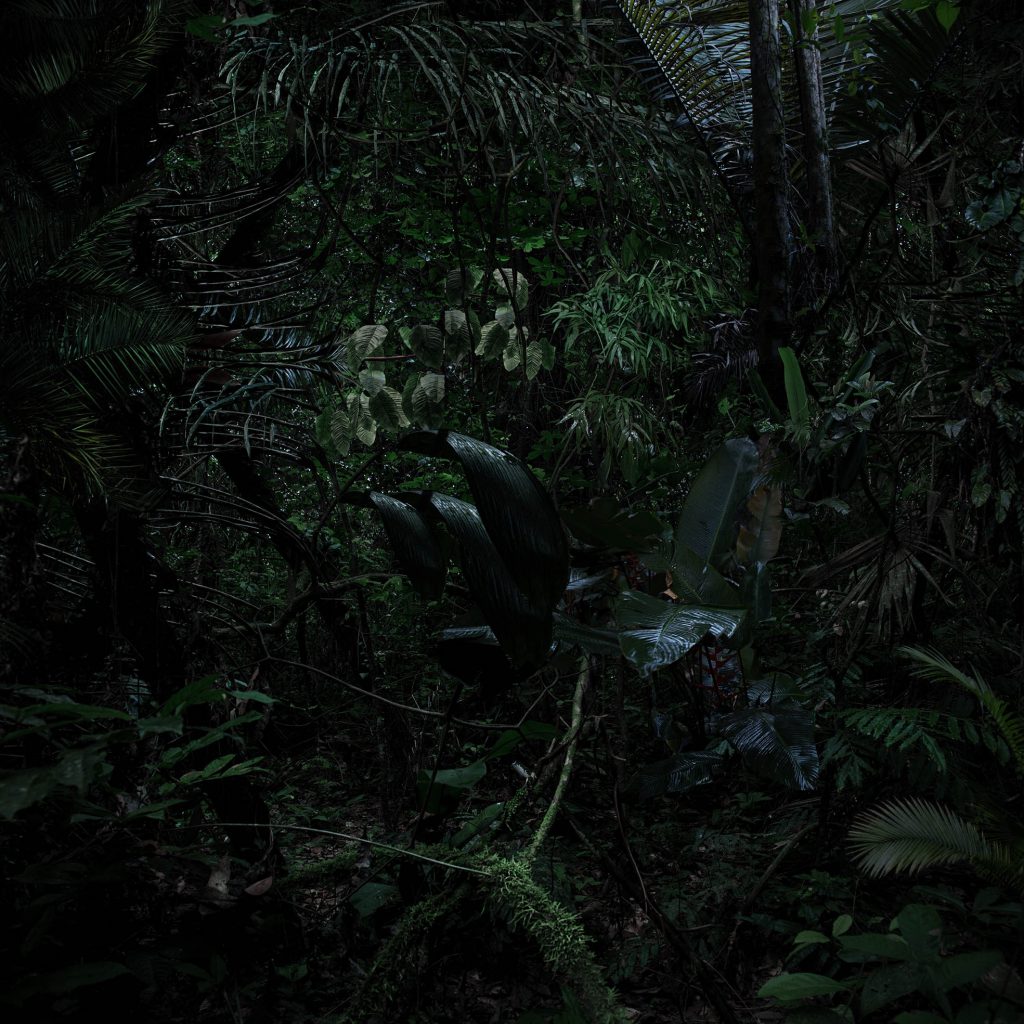
Why did you choose nature?
Unlike the urban landscape, nature is more complicated and ambiguous to define. It’s much harder, in fact, to find explicit references in nature than in any other dimension. This gives you the freedom to interpret it in different ways, even when using a reality-based approach.
The natural scenery that I portray, compared to a well-defined image, is more reminiscent of a rather abstract dimension. However, such dimension is capable of delivering a specific impression to the viewer.
Nature and its essence as an archaic entity still attract me for unknown reasons. Yet, these become clearer in the exact moment I immerse myself in it. The fascination I feel when I witness the incredible beauty of such power motivates me to unveil stories where nature plays the role of a bystander. That makes me want to investigate the natural world tirelessly to try and capture the mysteries and the marginalities that it contains.

How important is photography as a medium to you?
Photography is important as a visual language. It is a means to elaborate reality through the eyes, as it elevates the vision process and transforms it into substance.
Your works are imbued in mystery, ‘the sublime, the dark side of nature’. Why did you choose to represent the world from this point of view?
That is the most challenging area to perceive in my work, the part that requires the longer time to be enjoyed. This is because it immediately refers to a more hidden and distant dimension. I believe that the nocturnal container and the imagery that follows can offer a different perspective on the world. At the same time, the unmediated essence of daylight doesn’t leave enough time for a complete and thorough vision of reality. The ambiguity that often emerges allows the viewer to wander elsewhere to get a broader view of things.
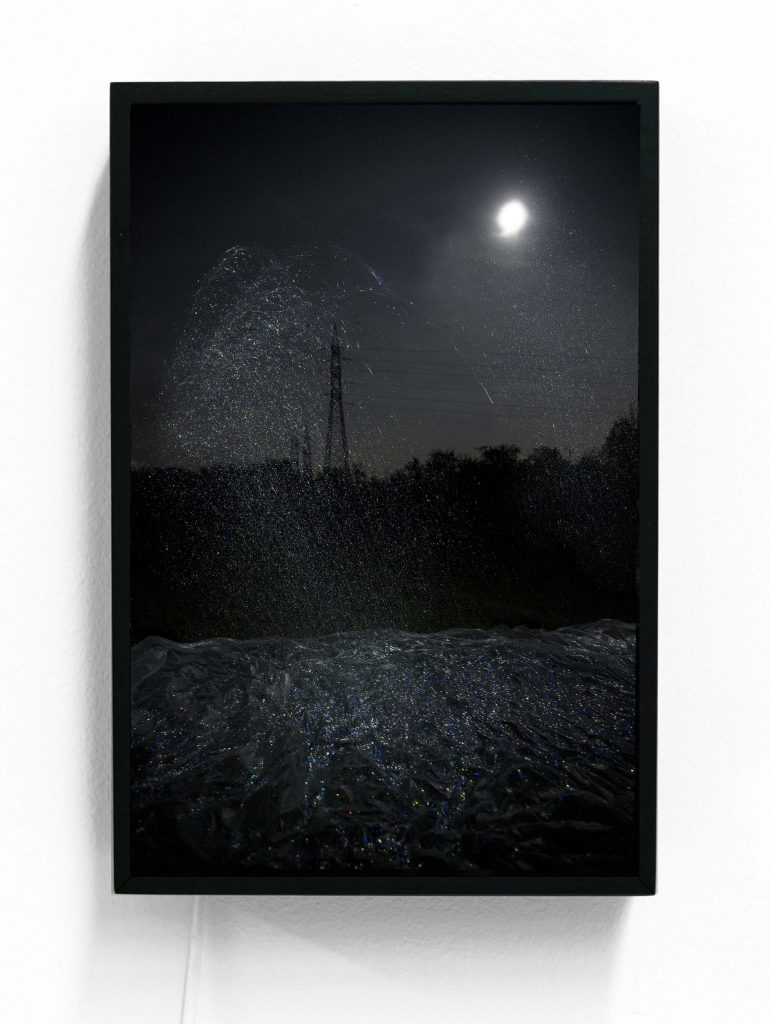
Is there a critique to society in your decision to take the stand of the night, the shadow, rather than the daylight?
Metaphorically, I connect the night with an indefinite space, a slow time in which you have to wait. Such time dilation makes you face the impossibility of seeing things straight away. Contemporarily, it leads you to a more careful and active reflection that inevitably makes you collide with new forms of truth. Darkness is traditionally associated with frightening and occult things. Still, you need to enter this obscurity and explore it from within to reach knowledge—only this way a slow process of unveiling can take place.
Shadow has always been the counterpart of existence, as opacity lies inside every object. The variety of obscure colours contrasts with the indivisible essence of the light that generates them, unveiling the layers that flow into the gap between vision and realism.

- You tend to use particular materials and procedures. Can you tell us more about the process you use to create your works?
Generally, my first approach is through photography. I tend to investigate places, and my experience of them, intercepting their physical presence and atmospheres. I start from a surface to then create a sort of extension of it, a projection of the image that eventually becomes tridimensional. Thus, the materialization process crosses over into different languages depending on the intention.
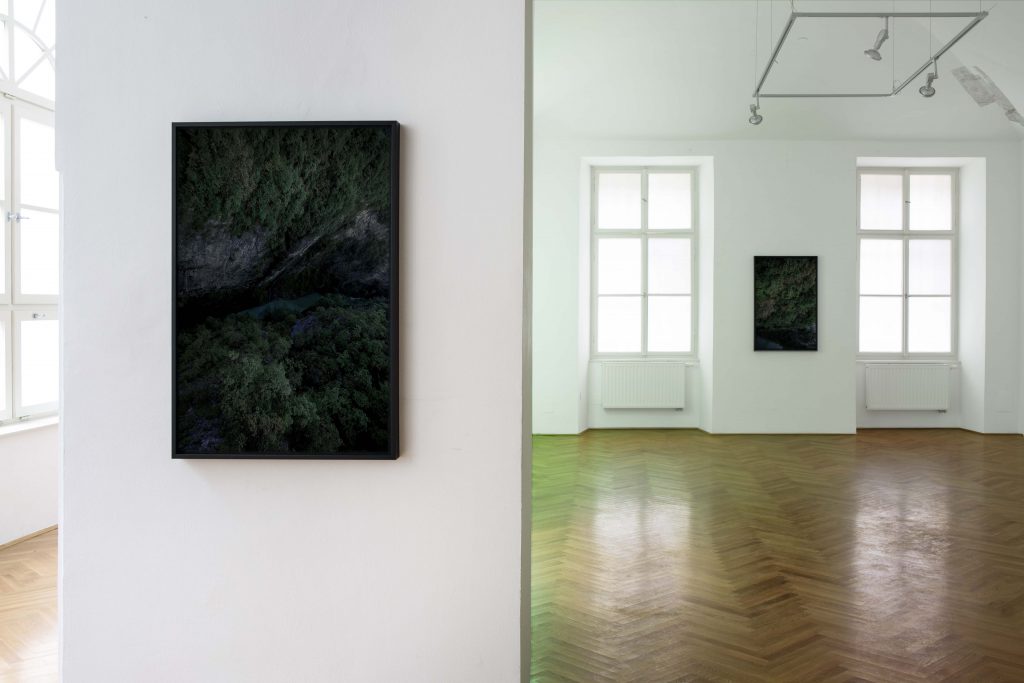
Do you take inspiration from the nature that surrounds us or do you tend to build up imaginary worlds? Or both?
I, indeed, take inspiration from both. By starting from a specific historical or social context I aim to capture nature either in its most disarming entirety or in the twilight interstice. This represents the moment of transition from day to night in which light seems unreal and capable of manipulating the appearance of things. On the other hand, when nature gets incorporated in its nocturnal container, it can be shown in its altered or artificial dimension. This dimension contains elements that initially did not belong to it and serves the purpose of narrating another imaginary.
Can you talk about the titles of your works?
Each title comes from different sources. It can be the visual essence of the artwork and its atmosphere, as in Aria Buia / Dark Air. In other cases, it can refer to the object of the artwork itself, as in Faded Garden, or to the language originated from the surface of the photographic works: Volume Notturno / Nocturnal Volume. Tuffo Stellare / Star Leap or Pioggia Lunare / Moon Rain strictly refer to what happens when imagination and reality blend. I try to keep a close relationship between what the image portrays and what it suggests, focusing on a more poetic and imaginative reading.

Silvia Mariotti was born in 1980, lives and works in Milan. In March 2005 she graduated in painting from the Academy of Fine Arts in Urbino (IT); in 2008 in Visual Arts. She works with photography in all its variations to investigate the environment from a sociological and historical point of view.
In 2013, she won the first prize in the X edition of the Celeste Award for photography. In 2016 she participated at FAAP’s artistic residency (São Paulo). She was also a finalist in the IX edition of the Talent Prize in Rome. The year after another residency program in São Paul selected her, Uberbau House. She exhibited in various galleries and public spaces, including the Museum of Contemporary Art in Lissone, the Fabbri Foundation of Pieve di Soligo (IT), Villa Manin in Passariano (IT), the Macro Museum in Rome and Palazzo Ducale of Urbino. In 2019, she won the Level 0 prize by GNAM (National Gallery of Modern and Contemporary Art of Rome) at the art fair Art Verona.

